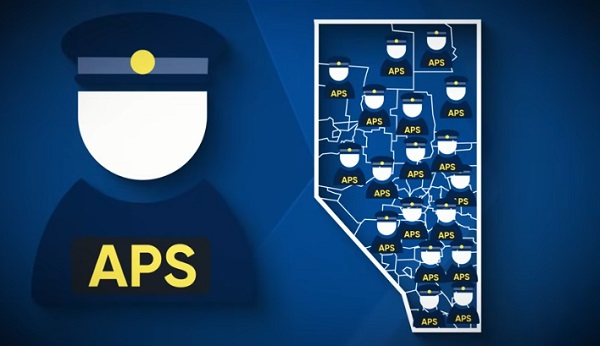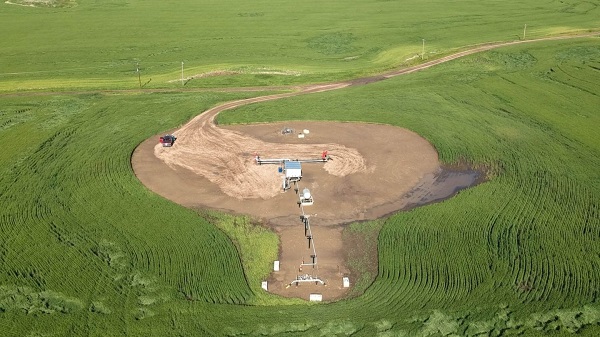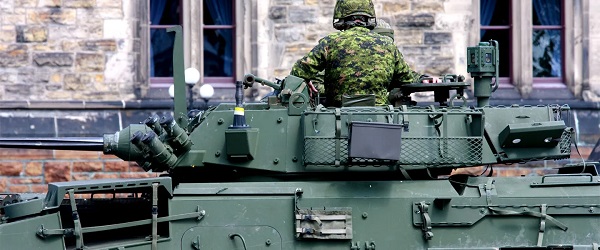Alberta
Provincial report recommends doubling support and making STARS sole air ambulance provider

Helicopter Emergency Medical Services Report released
A report on Alberta’s helicopter emergency medical services looks at existing services, gaps in coverage, best practices and procedures, and funding models.
Over the coming months, the Government of Alberta will evaluate the report and consult with helicopter emergency medical service (HEMS) providers before making any final decisions.
The Helicopter Emergency Medical Services Report has 11 recommendations, with the three main recommendations being:
- Single provider: Shock Trauma Air Rescue Service (STARS) would become the dedicated helicopter emergency medical service provider for the province. STARS would work with other helicopter emergency medical providers to ensure consistent, safe coverage across Alberta. Provincial funding for STARS would rise to 50 per cent of their operating budget (from the current 23 per cent).
- Legislation: A new air ambulance regulation would establish consistent deployment, operational, clinical and aviation standards.
- Dispatch integration: The dispatch of STARS would be integrated with other emergency medical services to allow for the best use of all services to achieve the most efficient response.
“Thank you to the HEMS providers and community leaders who provided their perspective on the delivery of helicopter emergency medical services in Alberta. We all agree that in life-threatening situations, Albertans need to know that they can get the help they need – no matter where they are. We will be reviewing the report further and consulting with HEMS providers in the coming months to determine next steps.”
Quick facts
- Helicopter emergency medical services are essential when ground ambulances cannot reach Albertans during a medical emergency or they are unable to reach them in a safe and timely manner.
- Alberta Health Services is responsible for the delivery of emergency medical services across Alberta, including ground, fixed-wing and helicopter ambulances.
- Currently, Alberta Health Services provides about $8.4 million per year to helicopter emergency medical services funding.
- Approximately 1,450 helicopter flights take place each year; 7,300 are flown using fixed-wing aircraft.
- The three main helicopter service providers that support emergency medical services are:
- STARS (Shock Trauma Air Rescue Service)
- Bases are located in Calgary, Edmonton and Grande Prairie.
- In 2019-20, STARS flew 1,255 missions (about 92.6 per cent of all missions).
- STARS covers 90 per cent of Alberta’s rural and remote population without refuelling from its current base locations.
- STARS is the only provider that delivers critical care level service on 24-7 dedicated helicopters with advanced life-support equipment.
- HALO (Helicopter Air Lift Operation)
- Based in Medicine Hat, it serves southeast Alberta.
- In 2019-20, HALO flew 38 missions (about 2.8 per cent of all missions).
- HERO (Helicopter Emergency Response Organization)
- Based in Fort McMurray, it serves northeast Alberta.
- In 2019-20, HERO flew 62 missions (about 4.6 per cent of all missions).
- STARS (Shock Trauma Air Rescue Service)
- Currently, there are no regulations guiding the standards of air ambulance medical services in Alberta.
Alberta
Alberta judge sides with LGBT activists, allows ‘gender transitions’ for kids to continue

From LifeSiteNews
‘I think the court was in error,’ Alberta Premier Danielle Smith has said. ‘There will be irreparable harm to children who get sterilized.’
LGBT activists have won an injunction that prevents the Alberta government from restricting “gender transitions” for children.
On June 27, Alberta King’s Court Justice Allison Kuntz granted a temporary injunction against legislation that prohibited minors under the age of 16 from undergoing irreversible sex-change surgeries or taking puberty blockers.
“The evidence shows that singling out health care for gender diverse youth and making it subject to government control will cause irreparable harm to gender diverse youth by reinforcing the discrimination and prejudice that they are already subjected to,” Kuntz claimed in her judgment.
Kuntz further said that the legislation poses serious Charter issues which need to be worked through in court before the legislation could be enforced. Court dates for the arguments have yet to be set.
READ: Support for traditional family values surges in Alberta
Alberta’s new legislation, which was passed in December, amends the Health Act to “prohibit regulated health professionals from performing sex reassignment surgeries on minors.”
The legislation would also ban the “use of puberty blockers and hormone therapies for the treatment of gender dysphoria or gender incongruence” to kids 15 years of age and under “except for those who have already commenced treatment and would allow for minors aged 16 and 17 to choose to commence puberty blockers and hormone therapies for gender reassignment and affirmation purposes with parental, physician and psychologist approval.”
Just days after the legislation was passed, an LGBT activist group called Egale Canada, along with many other LGBT organizations, filed an injunction to block the bill.
In her ruling, Kuntz argued that Alberta’s legislation “will signal that there is something wrong with or suspect about having a gender identity that is different than the sex you were assigned at birth.”
She further claimed that preventing minors from making life-altering decisions could inflict emotional damage.
However, the province of Alberta argued that these damages are speculative and the process of gender-transitioning children is not supported by scientific evidence.
“I think the court was in error,” Alberta Premier Danielle Smith said on her Saturday radio show. “That’s part of the reason why we’re taking it to court. The court had said there will be irreparable harm if the law goes ahead. I feel the reverse. I feel there will be irreparable harm to children who get sterilized at the age of 10 years old – and so we want those kids to have their day in court.”
READ: Canadian doctors claim ‘Charter right’ to mutilate gender-confused children in Alberta
Overwhelming evidence shows that persons who undergo so-called “gender transitioning” procedures are more likely to commit suicide than those who are not given such irreversible surgeries. In addition to catering to a false reality that one’s sex can be changed, trans surgeries and drugs have been linked to permanent physical and psychological damage, including cardiovascular diseases, loss of bone density, cancer, strokes and blood clots, and infertility.
Meanwhile, a recent study on the side effects of “sex change” surgeries discovered that 81 percent of those who have undergone them in the past five years reported experiencing pain simply from normal movements in the weeks and months that followed, among many other negative side effects.
Alberta
Alberta Independence Seekers Take First Step: Citizen Initiative Application Approved, Notice of Initiative Petition Issued

Alberta’s Chief Electoral Officer, Gordon McClure, has issued a Notice of Initiative Petition.
This confirms a Citizen Initiative application has been received and the Chief Electoral Officer has determined the requirements of section 2(3) of the Citizen Initiative Act have been met.
Approved Initiative Petition Information
The approved citizen initiative application is for a policy proposal with the following proposed question:
Do you agree that Alberta should remain in Canada?
The Notice of Initiative Petition, application, and statement provided by the proponent are available on Elections Alberta’s website on the Current Initiatives Petition page.
As the application was received and approved prior to coming into force of Bill 54: Election Statutes Amendment Act, the Citizen Initiative process will follow requirements set out in the Citizen Initiative Act as of June 30, 2025.
Next Steps
- The proponent must appoint a chief financial officer within 30 days (by July 30, 2025).
- Once the 30-day publication period is complete and a chief financial officer has been appointed, Elections Alberta will:
- issue the citizen initiative petition,
- publish a notice on the Current Initiatives Petition page of our website indicating the petition has been issued, specifying the signing period dates, and the number of signatures required for a successful petition, and
- issue the citizen initiative petition signature sheets and witness affidavits. Signatures collected on other forms will not be accepted.
More information on the process, the status of the citizen initiative petition, financing rules, third party advertising rules, and frequently asked questions may be found on the Elections Alberta website.
Elections Alberta is an independent, non-partisan office of the Legislative Assembly of Alberta responsible for administering provincial elections, by-elections, and referendums.
-

 Alberta1 day ago
Alberta1 day agoAlberta judge sides with LGBT activists, allows ‘gender transitions’ for kids to continue
-

 Business3 hours ago
Business3 hours agoElon Musk slams Trump’s ‘Big Beautiful Bill,’ calls for new political party
-
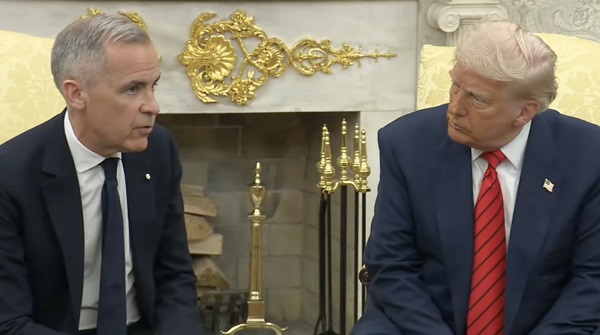
 Business1 day ago
Business1 day agoCanada Caves: Carney ditches digital services tax after criticism from Trump
-

 Crime1 day ago
Crime1 day agoSuspected ambush leaves two firefighters dead in Idaho
-

 Alberta1 day ago
Alberta1 day agoAlberta Independence Seekers Take First Step: Citizen Initiative Application Approved, Notice of Initiative Petition Issued
-
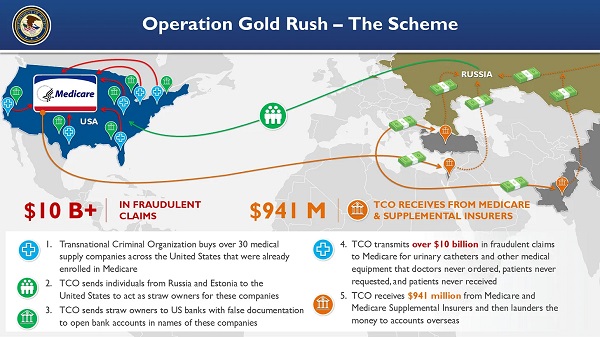
 Crime14 hours ago
Crime14 hours agoNational Health Care Fraud Takedown Results in 324 Defendants Charged in Connection with Over $14.6 Billion in Alleged Fraud
-

 Health14 hours ago
Health14 hours agoRFK Jr. Unloads Disturbing Vaccine Secrets on Tucker—And Surprises Everyone on Trump
-

 Censorship Industrial Complex3 hours ago
Censorship Industrial Complex3 hours agoGlobal media alliance colluded with foreign nations to crush free speech in America: House report
